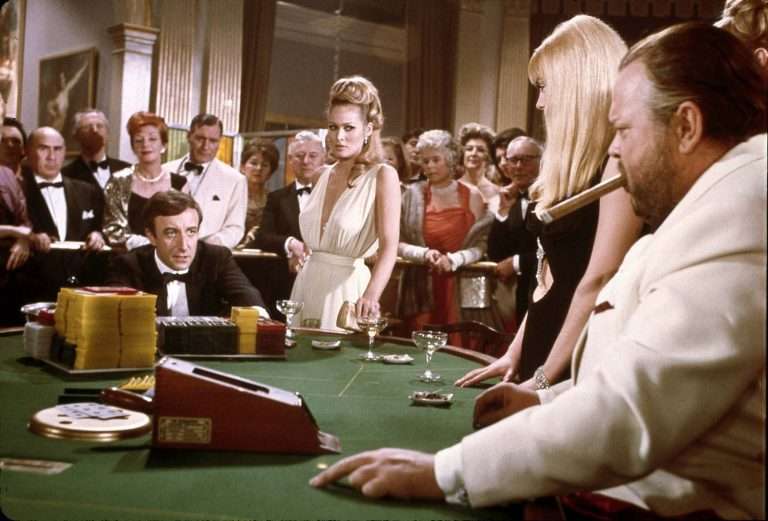When it comes to putting money on the line, planning should play the leading part. Betting or gambling,in any form, be it Vegas, Macau, or a mobile phone: are supposed to be fun. People drop lakhs of rupees on stocks, trips to Disneyland, and at times; they gamble some in the hope to win back more.
When it comes to online casino gambling, players should avoid going in without setting a budget aside. This means a sum of money they can gladly lose without breaking a sweat. Regardless of the game: playing poker, betting on sports, or spinning online slot machines, managing how to much to gamble with, also known as a bankroll, will keep your pockets happy.
It’s good to begin at the “how” before the why, and how to set an online gambling budget is just a few spaces below. Understand bankrolls, and check out some checkpoints for sticking to a budget. Occasional gambler or strategic savant looking to make better plays with their funds: read on.
1. What is a Bankroll?
A bankroll is the total amount of money a player sets aside specifically for gambling. It’s like a cushion against losing streaks and variance, protecting them from financial ruin (more on this below) if luck isn’t on their side. One of the primary reasons for having a bankroll is it allows this great ability to disassociate from money emotionally. Also, when you’re betting a small, calculated percentage of the allocated bankroll, you’re far less likely to make impulsive decisions based on emotions. Keeping your gambling separate from your other finances is essential to avoiding overextension.
As Stanford Wong, a notable gambling theorist, once stated, your bankroll is not just the money you have in your account but also how much you’re emotionally willing to lose. Say a player has a budget of Rs.2 lakh to play with. Now of course they’d begin in the hope to log out with more. However, if they were not so lucky, how much would they have to lose in that 2 lakh to make them consider walking away from gambling altogether? If it’s no problem, then it’s good. But if losing a lakh would make them feel the urge to quit, that’s the bankroll amount to set. This is why it’s crucial to balance both your monetary and emotional bankroll when gambling.
2. How Much Should You Gamble With?
When setting a gambling budget, the first question to ask yourself is, how much to gamble with? This is a crucial aspect of setting a realistic budget. A good rule of thumb is never to gamble with money you can’t afford to lose. This means that you should only be using your disposable income for gambling and not money earmarked for essential expenses like rent, groceries, or bills.
An online budget calculator can help you determine how much disposable income you have after accounting for necessities. Once you have this number, you can allocate a portion of it for gambling. Experts often recommend setting aside 10% of your disposable income for recreational gambling, but this percentage can vary depending on personal preferences and financial circumstances.
3. Understanding Risk of Ruin
A crucial part of bankroll management is understanding the concept of risk of ruin. This term refers to the probability of losing your entire bankroll due to a series of losses. To minimize the risk of ruin, you players need to keep two factors in mind:
- Bankroll size
- Skill level
If you’re a highly skilled player, your risk of ruin is lower, but if you’re just starting, no bankroll is large enough to overcome continuous poor decisions. To protect your bankroll, ensure that you’re always wagering within your means. A general rule is to never bet more than 1-2% of your bankroll on any given bet, regardless of whether you’re playing slots, poker, or betting on sports.
4. Setting a Sports Betting Bankroll
Sports betting is another area where setting a budget is essential. The size of your bankroll will depend on how much you expect to profit and how frequently you’re betting. For example, if you’re placing 1% of your bankroll on each bet, and you have a 4% edge over the sportsbook, it will take 100 bets to churn through your bankroll once.
By using an online budget calculator, you can estimate how many bets it will take to double your bankroll. Let’s say you’re placing 10 bets a day, and it takes you 180 days (roughly six months) to double your bankroll. The more bets you place with a consistent edge, the quicker you’ll see your bankroll grow, but you must remain disciplined and stick to your betting plan.
5. Managing Your Blackjack Bankroll
In blackjack, bankroll management is equally important. While professional card counters might suggest starting with a Rs. 20,000 bankroll, most casual players won’t need such a large amount. A more practical approach is to start with what you can afford—whether it’s Rs 1,000 or 2,000—and grow from there.
However, patience and consistency are key. For beginners, it’s not uncommon to generate only a few hundred rupees an hour, but over time, with the right strategies and persistence, their bankroll can increase. One crucial factor in blackjack is to avoid increasing the bet size too soon. Just because a bankroll grows doesn’t mean the player needs to move up in stakes without first considering the risk of ruin and how cool they are with it.
6. Poker: Surviving Variance
Poker is a game of skill, but it’s also heavily influenced by variance. Even the best players can go through extended losing streaks, which is why a larger bankroll is critical to long-term success. For live poker, it’s generally recommended to have a bankroll large enough to cover at least 20 buy-ins. This cushion helps you withstand swings and keeps you in the game, regardless of short-term outcomes.
Poker requires a delicate balance between managing your money and managing your emotions. A larger bankroll helps with the former, but to truly succeed, you also need to develop an “emotional bankroll” to handle the inevitable ups and downs of the game.
7. Bet Sizing and Session Management for Slots
Slot games are primarily games of chance, so managing your bankroll is essential to prolong your gaming sessions and avoid overspending. One common strategy is to only bet 1-2% of your total bankroll per spin. For example, if you have a $100 bankroll, each spin should be between $1 and $2.
Setting win and loss limits is also critical. Decide how much you’re willing to lose before stopping and how much you want to win before cashing out. Having these limits in place helps you avoid the temptation to chase losses, which can quickly deplete your bankroll.
8. Stick to Your Budget
Finally, it’s essential to remain disciplined and stick to the budget you’ve set. Online gambling can be an exciting and sometimes overwhelming experience, but it’s crucial to remember that gambling should always be viewed as a form of entertainment, not a way to make money. Sticking to your budget not only helps you enjoy the experience more but also ensures that you’re gambling responsibly.
If you find it difficult to keep track of your spending, using an online budget calculator can help. These tools allow you to input your bankroll, track your bets, and manage your funds efficiently. They can be especially useful for keeping tabs on multiple gambling activities, like poker, blackjack, and sports betting, all while ensuring that you stay within your budget.
Conclusion
Setting a budget for online gambling is one of the most important steps you can take to ensure a positive and responsible gaming experience. Whether you’re playing poker, sports betting, or enjoying online slots, having a solid bankroll management strategy will protect your funds and keep the fun going. By grounding yourself in a budget, calculating the risk of ruin, and hedging all bets wisely, most players should find themselves able to enjoy online gambling without the stress.






